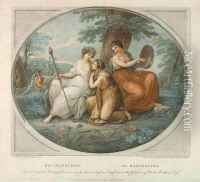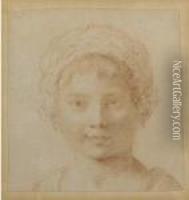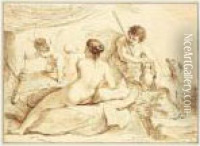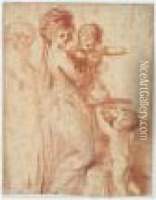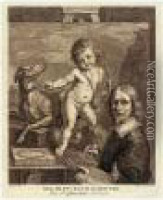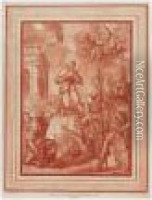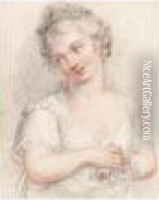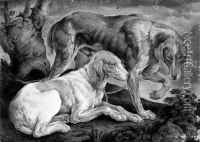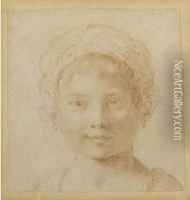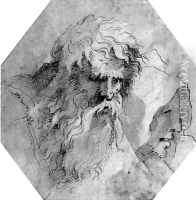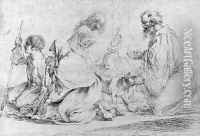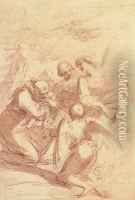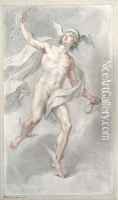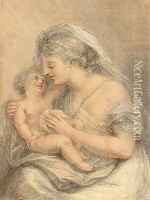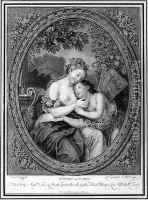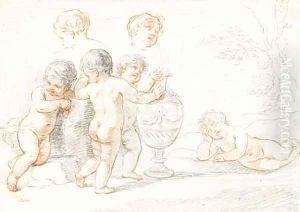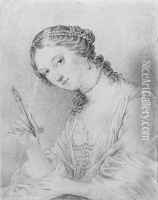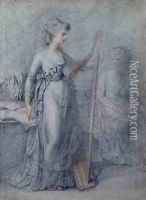Francesco Bartolozzi Paintings
Francesco Bartolozzi was an Italian engraver, whose most productive period was spent in London. He was born on September 25, 1727, in Florence, Italy, into a family of goldsmiths and painters, which provided him with an early exposure to the arts. He initially trained with his father, and then studied painting under Ignazio Hugford and Giovanni Domenico Ferretti. He later turned his attention to engraving, studying under Joseph Wagner in Venice, where he began to make a name for himself.
Bartolozzi moved to Rome and then, in 1764, he was invited to London by the English painter Richard Wilson. In London, he became well-known for his delicate stipple engravings, which involved creating images with tiny dots and small flicks or lines. He was renowned for his reproductions of works by other artists, particularly his engravings after Guercino. Bartolozzi's work was in high demand, and he produced a wide range of prints, including decorative works, book illustrations, and currency designs.
In 1768, he was appointed as the founding member of the Royal Academy of Arts in London. His reputation grew, and he became the engraver to King George III. Bartolozzi's style influenced a generation of British printmakers and engravers. Notably, he was the master of Thomas Gainsborough's nephew, Gainsborough Dupont, who became an accomplished engraver in his own right.
Despite his success in Britain, Bartolozzi decided to leave London in 1802. He accepted an invitation from the Portuguese court and moved to Lisbon where he was tasked with establishing a national academy of art. Bartolozzi continued to work and teach in Lisbon until his death on March 7, 1815. His legacy is preserved in the numerous prints that are still admired for their technical skill and artistic beauty. Bartolozzi's work remains an important part of the history of European printmaking.
